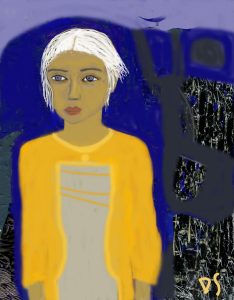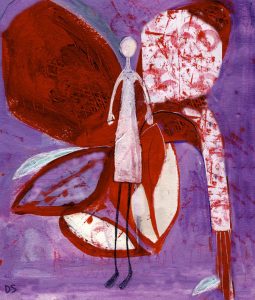
Inner child work is usually associated with adults whose troubled childhoods have been adversely affected emotionally, mentally and physiologically. It explores the buried parts of the self with the intention of revealing one’s ‘True Self’.
What does it mean by a wounded ‘inner child’?
The inner child is a made-up term which has become integrated into our language. It doesn’t have a scientific definition. Its meaning derives from a Western interpretation out of a need to give shape to and articulate the impact of particular incidences and repetitive themes which have occurred in childhood. These impacts re-shape patterns of thoughts, behaviours and belief systems and, in occurrences of perceived and actual traumatic experience, are directly linked to the nervous system. For example, the vagus is a cranial nerve which makes up twelve distinct nerves originating in the brainstem. Its meandering feature travels down to the gut. Many times I’ve heard my child clients with stomach complaints where there is no indication of physical causes. This winding network sends signals throughout the body and gets communicated through reactive behaviours and physical symptoms such as heart palpitations.
Unhealed, unconscious material from the past can become triggered from what is occurring in the present. And just like the neurotransmitters communicating within the body, so do signals get transmitted energetically to others unconsciously. For example, a child who is being bullied, carries emotional affects, such as fear and low self-esteem which get encoded in the body. Children and young people who bully, pick up on these signals and target others who they perceive as vulnerable. They have an uncanny way of intuitively knowing this.

There is enough evidence to suggest that early interventions can make a hugely positive difference.
Somatic therapeutic elements
In the therapy sessions, working integratively means that not only the emotions but the physical body must be included, such as helping the child or young person become aware of the way they stand and the way they move through the world.
Different aspects of the inner child
The concept of the inner child can be seen as diverse aspects of inner child selves that come into existence - that is - split off and fragmented parts of the self, operating in the unconscious. These split of parts arise from particular circumstances which may subjectively be experienced as harrowing and painful. And such experiences affect the nervous system.
There are many scenarios that can play out in cases of trauma, such as a child pushing down their feelings, hiding what happened, living in fear, feelings of shame and the belief that they’ve done something wrong, fear of not being believed (which can be an actual reality) and so on. A child may be subjected to harsh behaviours, constant put-downs whether from adults or peers. Needless to say, they are not likely to feel safe.
Nightmares are a common occurrence in children. Whilst this does not necessarily translate into an actual traumatic event, the unconscious works through dreams on multiple levels. This means that fears and other disturbances can be brought to conscious awareness and worked through in the therapeutic process.

When working with children and teens, we’re looking through an intuitive lens into the historic emotional states from zero, meaning in the womb, up until the current age of the individual. The principle dynamics centred on inner child work relates to issues they bring to the therapy space. Often a child or young person will become teary when speaking about something which has caused a block and impacts their current life. This may not be obvious when they initially come into therapy for a particular issue, but as the therapy unfolds, and they are deeply listened to, this listening, being present and knowing intuitively how and when to respond to the child, is integral to the work.
When anxiety and panic attacks arise, these may be triggered without a person being aware of the origins. Most commonly I hear my child and teen clients relate these emotional reactions, steeped in fear about going to and being in school. If I were an alien, visiting Earth for the first time and was able to tune into these children’s anxiety and panic attacks, I may well interpret ‘school’ as some sort of mandatory prison. This isn’t the whole picture but it’s a significant aspect of a system which is undeveloped in terms of higher consciousness. In other words, dominated by a large portion of unconscious behaviours and projections on the children.
Working creatively with the inner child selves
Carl Jung’s Shadow work was not just about the painful issues which relate to past experience that arise as emotional wounds. These buried parts which become frozen in time also relate to what’s known as the ‘golden Shadow’. These different aspects of the inner child include the capacity to be happy and vivacious and the ‘magical child’ full of wonder. With a focus on unearthing and healing the lost, buried, wounded parts of the self, as well as the joyful essence, we reclaim greater regions of the True Self, also known as the authentic self, through creative play and art based therapeutic facilitations.
The inner alchemist in all of us
Just as the ancient indigenous botanists embodied a visceral relationship with the plants, healing physical, emotional and spiritual maladies, they could also be seen as alchemists. Each of us has an inner alchemist, a Higher Self. But in order to gain access, children and young people especially, can greatly benefit from a professional ‘guide’ to open a portal into an inner landscape, revealing messages from a conscious source of Light. With this in mind, the therapeutic journey in its transpersonal and integrative fluidity takes a holistic approach.
